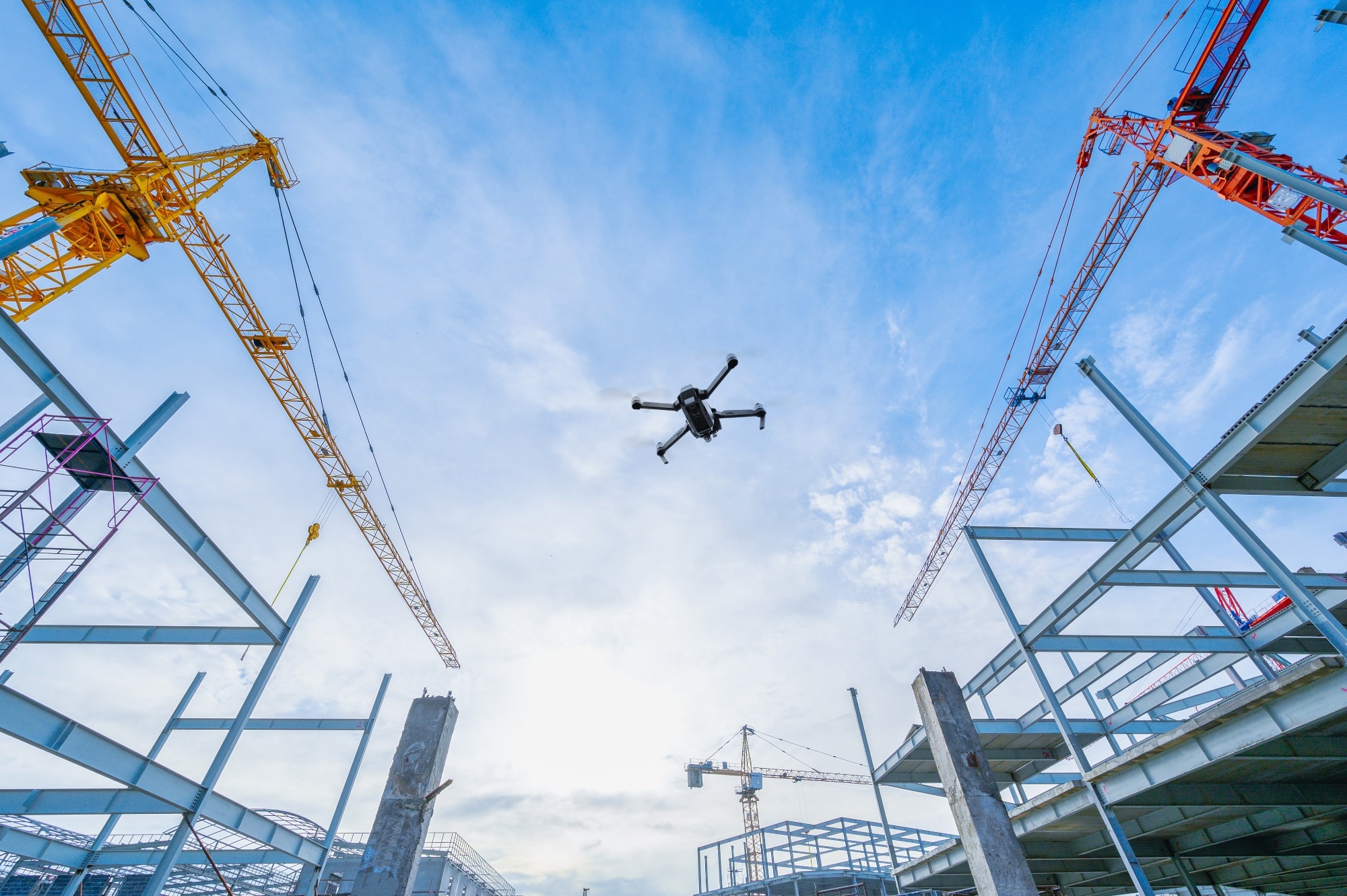Routine inspection is a cornerstone of safe, reliable infrastructure - but traditional methods are often slow, costly, and risky.

Study: A Review of Technical Advances and Applications of Intelligent Inspection Robots in Structural Health Monitoring. Image Credit: Casezy idea/Shutterstock.com
A new review published in SmartBot presents a major step forward: intelligent inspection robots are now being used to assess the condition of structures with greater speed, accuracy, and safety than manual inspections allow. For engineers and construction professionals, these systems are quickly becoming essential tools in maintaining complex infrastructure across bridges, tunnels, high-rises, and underwater assets.
The review examines how robotics is reshaping structural health monitoring (SHM) - the process of evaluating the performance and integrity of built environments over time. It highlights key developments in robotic inspection systems, details the technologies that power them, and outlines both their practical applications and ongoing challenges. With automation, advanced sensing, and AI-driven analytics, these robots are helping extend service life, lower maintenance costs, and reduce the risk of unexpected failures.
Background
Urban growth, aging structures, and increasing load demands are putting pressure on critical infrastructure. Bridges, roads, dams, and buildings are all subject to deterioration from weather, vibration, corrosion, and fatigue. Manual inspections often involving scaffolding, rope access, or diving are not only expensive and time-consuming, but can also miss early-stage defects and expose workers to hazardous conditions.
In contrast, intelligent inspection robots offer a scalable, data-driven solution. These systems automate the inspection process using onboard sensors, imaging systems, and navigation tools. The review identifies four primary types of inspection robots, each suited to different structural contexts: ground-based, wall-climbing, aerial, and underwater. By matching robot type to inspection environment, the field is moving toward more targeted, high-precision assessments.
Applications in the Field
To understand how intelligent robots are applied across diverse inspection scenarios, the review organizes them into four main categories: ground, wall-climbing, aerial, and underwater systems. Each type is designed to meet the demands of specific environments and structural conditions, offering unique strengths in terms of mobility, sensor capabilities, and inspection precision.
Ground robots inspect large, flat surfaces such as roads, parking structures, and the undersides of bridges. Some use 3D mapping tools like streak projection scanners and stereo vision systems to detect cracks, deformation, and surface wear. In semi-autonomous setups, these robots have been deployed on highways to improve crack localization and reduce human error in defect identification.
Wall-climbing robots are designed to operate on vertical or inclined surfaces - ideal for inspecting high-rise facades, bridge piers, and steel box girders. Their climbing mechanisms allow them to access areas that are dangerous or impossible for human inspectors, while maintaining stable imaging and sensor accuracy even on rough concrete.
Aerial robots (drones) are now a familiar sight on construction and maintenance sites. Equipped with high-resolution cameras and LiDAR systems, they can quickly scan large structures such as wind turbines, cranes, or tower supports. These robots are especially useful for covering wide areas in a short time, reducing the need for expensive scaffolding or lifts.
Underwater robots are used in ports, pipelines, hydroelectric facilities, and offshore platforms. These systems are capable of agile, multidirectional movement, enabling them to navigate tight or submerged spaces. With onboard imaging, sonar, and corrosion detection sensors, they’re proving highly effective at assessing submerged foundations and structural elements.
Across all platforms, sensor integration plays a critical role. The review highlights the use of high-resolution cameras, LiDAR, ultrasonic sensors, and infrared imagers - each tailored to detect specific structural issues like cracks, corrosion, or deformation. Multimodal sensor fusion enhances data quality, while technologies such as Simultaneous Localization and Mapping (SLAM) and Ultra-Wideband (UWB) positioning enable reliable navigation and defect mapping, even in GPS-denied environments.
Together, these case studies show how careful coordination between robotic design, sensing technologies, and intelligent software is making real-time, high-precision monitoring a reality.
Current Challenges
Despite impressive progress, several technical hurdles remain. Many robots still struggle with autonomous navigation in cluttered or GPS-denied spaces, particularly in older or irregularly shaped structures. Battery limitations restrict inspection time and sensor capacity, while payload constraints can limit onboard processing power or camera quality.
There’s also the issue of standardization. With many different robot designs in use, there’s a growing need for industry-wide benchmarks and protocols to compare performance and reliability.
The future of robotic inspection lies in more adaptive, collaborative systems. The review points to ongoing research into multi-robot coordination, where fleets of robots can work together to inspect large structures efficiently. Digital twin technology is also on the horizon, allowing engineers to pair real-time robotic data with 3D structural models for predictive maintenance and lifecycle planning.
Continued collaboration between structural engineers, materials scientists, and robotics developers will be key to advancing these systems. As robots become more autonomous, energy-efficient, and sensor-rich, their role in construction and infrastructure management will only grow.
Conclusion
Behind every bridge, tunnel, or high-rise is a simple need: to know that it’s safe, solid, and built to last. Intelligent inspection robots are helping make that possible - not by replacing people, but by giving them better tools to do the job right.
As these systems become part of everyday construction and maintenance work, they’re changing not just how we inspect structures but also how we care for them.
Journal Reference
Li, D., Shi, H., et al. (2025). A Review of Technical Advances and Applications of Intelligent Inspection Robots in Structural Health Monitoring. SmartBot, e70000. DOI:10.1002/SMB2.70000. https://onlinelibrary.wiley.com/doi/10.1002/smb2.70000
Disclaimer: The views expressed here are those of the author expressed in their private capacity and do not necessarily represent the views of AZoM.com Limited T/A AZoNetwork the owner and operator of this website. This disclaimer forms part of the Terms and conditions of use of this website.